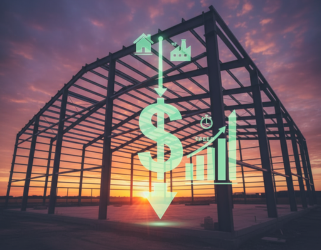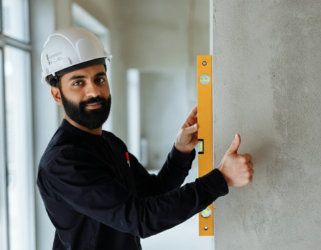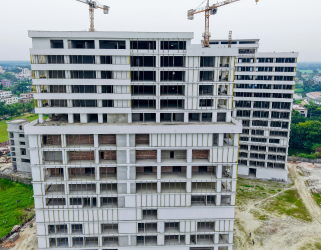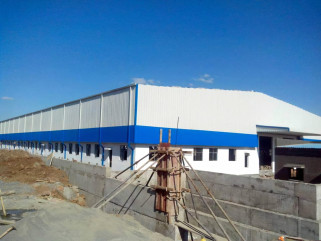Eco-Friendly Engineering: Sustainability in Metrosh’s PEB Manufacturing Process

Sustainability isn’t just a buzzword in the construction industry; it’s the foundation of transforming how we build. At Metrosh, this principle is deeply ingrained in the manufacturing of pre-engineered buildings (PEBs). It’s not just about delivering durable steel structures, but about crafting them in an environmentally responsible way. How does green PEB construction look in practice? Here's an insider’s view into Metrosh’s sustainable PEB manufacturing process and the values driving it.
A Blueprint for Change
Picture this. A sprawling factory floor hums with activity as steel sheets are precision-cut using modern, energy-efficient machinery. Workers meticulously assemble frames while a team in another corner monitors every step to reduce waste. This isn’t some futuristic vision; this is how Metrosh operates daily, merging innovation with eco-friendly principles.
Sometimes, achieving sustainability can feel like an uphill climb, yet every impactful initiative starts with a single step. At Metrosh, that step is cutting down material waste while ensuring strength and safety in every structure.
Sustainability Starts with Smarter Materials
Metrosh prioritizes the use of recycled steel in sustainable PEB manufacturing. Did you know that steel is 100% recyclable without losing strength? This means every beam and bolt in Metrosh’s pre-engineered buildings could have once been part of cars, appliances, or even old bridges. By choosing recycled steel, Metrosh reduces resource extraction and supports the circular economy.
Take the example of a recent warehouse project. By opting for recycled steel, Metrosh cut material costs for the client while also reducing carbon emissions associated with raw steel production. That’s a win-win for both the planet and the balance sheet.
Efficient Manufacturing Processes
Innovation lies at the heart of Metrosh’s operations. From designing modular components to using CNC machinery, every aspect of the manufacturing process is optimized to be energy-efficient and precise. Pre-engineered buildings are fabricated under controlled conditions at Metrosh’s facilities, which minimizes on-site waste and material overages.
Additionally, Metrosh has invested heavily in technologies that lower energy consumption. For instance, by integrating solar-powered systems into its factories, the company has significantly reduced reliance on non-renewable energy sources. These small but meaningful decisions help Metrosh carve a path toward truly eco-friendly pre-engineered buildings.
Green PEB Construction and Design
What sets Metrosh apart is the attention given to the sustainability of the final product. PEBs delivered by Metrosh are designed not just for functionality, but for long-term energy efficiency. Customizable insulation systems, solar panel mounting options, and natural ventilation strategies are seamlessly included in their designs to reduce operational energy demands.
Consider the story of a manufacturing client who needed a production facility with both robust utility and a sustainable footprint. Metrosh delivered a design that incorporated translucent roof panels for natural light and high-grade insulation that slashed the building’s temperature regulation costs by nearly 30%. The resulting decrease in energy consumption speaks not only to the project’s financial success but also to its ecological responsibility.
The People Factor
Sustainability extends beyond materials and technology; it calls for embedding environmental responsibility into workplace culture. Metrosh continuously trains its workforce to align with PEB sustainability practices. From strong waste segregation protocols on the factory floor to encouraging paperless operations in offices, Metrosh keeps every team member engaged in its eco-friendly goals.
Here’s an inspiring anecdote straight from the shop floor. After a production supervisor suggested redesigning packaging to eliminate single-use plastics, a company-wide initiative took root, saving Metrosh countless resources while keeping its commitment to green practices intact.
Beyond Buildings, Toward Impact
The ripple effects of Metrosh’s dedication to environmental stewardship spread far beyond the manufacturing plant. Their sustainable steel structures are frequently utilized in projects aimed at broader ecological goals, such as green warehouses, energy-efficient storage buildings, and carbon-neutral manufacturing plants.
Metrosh’s clients are not just customers; they’re collaborators on a shared sustainability mission. By prioritizing custom solutions that optimize space utilization and reduce environmental impact, Metrosh leads by example, showcasing how to balance economic and ecological demands.
PEB Sustainability Practices in Action
Metrosh champions several initiatives to make green PEB construction a reality:
Optimized Logistics: Raw materials are sourced strategically to minimize fuel usage during transport.
Smart Water Usage: Advanced recycling systems process manufacturing wastewater for reuse.
Lifecycle Durability: Metrosh ensures its structures will stand the test of time, reducing the need for frequent replacements that contribute to waste.
For a client managing cold storage facilities, Metrosh developed a PEB with advanced temperature control features and low-energy cooling solutions. This not only conserved energy during operations but reduced the carbon footprint of the entire supply chain.
Building a Sustainable Legacy
Sustainability is not just a goal for Metrosh–it’s a core value driving every beam, brace, and bolt. The company’s unwavering commitment is evident in every eco-friendly pre-engineered building it constructs. By pushing the boundaries of sustainable PEB manufacturing, training its teams, and collaborating with clients on greener solutions, Metrosh redefines what’s possible in modern construction.
Closing Thoughts
Metrosh isn’t just a leader in crafting pre-engineered buildings–it’s a leader in forging a sustainable future. By aligning with cutting-edge technologies and proven green practices, Metrosh shows that durability and eco-friendliness can coexist seamlessly. Pre-engineered steel buildings from Metrosh are not only about exceptional strength and safety but also about honoring the planet through 100% customization and optimal resource utilization.
When you partner with Metrosh, you’re not just constructing a building; you’re building a legacy of sustainability, innovation, and trust. With Metrosh, the future of green construction is already here.
Our Services
Pre Engineered Buildings | Civil Construction | Hybrid Constructions
FAQs
1. What makes Metrosh’s PEB (Pre-Engineered Building) manufacturing process eco-friendly?
Metrosh uses energy-efficient machinery, recycled steel, and optimized processes to minimize environmental impact while ensuring durable, sustainable structures.
2. How does Metrosh reduce waste in its PEB manufacturing process?
Metrosh optimizes material use, fabricates components with precision, and implements strict waste segregation and recycling practices for minimal waste production.
3. Are recycled or sustainable materials used in Metrosh’s steel buildings?
Yes, Metrosh prioritizes using recycled steel in its buildings, reducing the need for raw material extraction and supporting sustainable construction.
4. Does Metrosh follow any green building certifications or standards?
Metrosh adheres to green building principles and incorporates sustainable practices in line with global standards for eco-friendly construction.
5. What are the long-term sustainability benefits of choosing a PEB from Metrosh?
Metrosh’s PEBs offer reduced energy consumption, lower maintenance needs, and a smaller carbon footprint, ensuring cost-effective and sustainable solutions over time.
Related Articles

Why Pre-Engineered Buildings Are the Ultimate Cost-Saving Solution?
24 Sep 2025
Strong, Durable, and Long-Lasting: The Structural Superiority of PEBs
23 Sep 2025
Quality Control in Civil Construction: Metrosh Infra’s Standards and Practices
22 Sep 2025
Cost-Efficiency in Hybrid Construction: Balancing Budget and Quality
22 Sep 2025
Building the Future: Metrosh Infra’s Approach to Turnkey Civil Construction
20 Sep 2025


